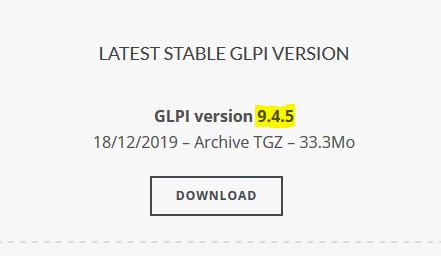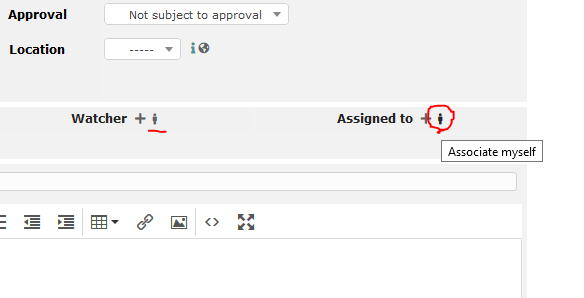Haveibeenpwned Com Pwned Our Helpdesk Glpi 9 4 5 Sql Injection
Posted on
TL;DR:
I should say before we get started, the fault for this lies entirely with GLPI, I place no blame at the feet of haveibeenpwned.com or Troy Hunt for this issue. It's all good fun! Concerning? Oh, for sure. You can't help but laugh though. Obligatory XKCD.
On GLPI 9.4.5, creating a call (via the standard interface or email, etc) that contains the basic SQL injection string ';-- " will be logged normally with no abnormal behaviour, however if a Technician assigns themselves to that call via the quick “Assign to me” button, the SQL query will be executed. In the case of the example string given above, all existing calls, open or closed, will be updated to have their descriptions deleted and replaced with any text that appears before the aforementioned malicious string. You can of course modify this to perform other SQL queries.
This is fixed on 9.4.6, however at the time of writing the GLPI Download page still links 9.4.5 as the latest update available, you need to go to github releases page to see 9.4.6. [2020-06-03 update:] now available directly from the GLPI download page.
9.4.6 was released before I found this exploit, however the GLPI website still showed 9.4.5 as the latest version. As far as we were concerned, we were on the latest version. Credit goes to whoever submitted it first, however at the time I had no knowledge of this already being known and resolved. Here's a video showcasing the issue:
The Long Version - how I found it, or how haveibeenpwned pwned our helpdesk
GLPI
We use GLPI as our technical support ticketing system at work. There are better solutions out there and we're investigating others, however GLPI has served us well since 2009ish. It is a web based, self hosted PHP/MySQL application.
haveibeenpwned.com
A website that catalogues and monitors data dumps for email addresses. It collects leaked or stolen databases, analyses them, pulls out any email addresses and can be searched by anyone for free to see if your email address has been included in a breach. You can also subscribe to receive alerts if your email address, or an email address on a domain that you own, is included in any future breaches.
haveibeenpwned.com pwned GLPI
Around late April we upgraded from an ancient version to the latest of GLPI - 9.4.5. All was well until we received an email from haveibeenpwned to our helpdesk support address, which automatically got logged as a support ticket. This email alerted us to some compromised accounts on our domain which were included in the latest Wishbone data dump.

I rushed to get the HIBP report generated to see who's data on our domain had been compromised by clicking a link in this email-turned-support-ticket. We got the report in a second email, which created a second ticket. I grabbed the data, deleted the second ticket (as we still had the original open) and perused the data. After doing the necessary work alerting any users to the breach of their data I went back to the original HIBP ticket, and realising I hadn't assigned it to myself did so and promptly solved it. All is well, time to move on?
Not quite. I and the other techs quickly noticed that every single ticket description had been deleted and replaced with partial header data from the HIBP email.
This immediately stunk of some kind of SQL Injection flaw and my mind raced as to what the cause was. I had a suspicion I knew… Unfortunately we were in the middle of business hours and due to Covid-19 are fully remote - we need a working helpdesk, and I don't have the priviledge of working on potential security issues in the day job. We restored from a backup taken on the previous evening (not too much data was lost, thankfully) and carried on with our day supporting our users.
Understanding the flaw
As soon as work ended, I grabbed an ubuntu .iso and built me a webserver VM. I had a feeling I knew what the cause of this SQLi was (check the header of the email shown above, you don't need long to figure out where the ‘malicious' code is!) but wasn't sure how it got executed - the email was parsed correctly and tickets weren't affected when the email came in, it wasn't until around the time I deleted the second ticket and closed the first call that problems arose.
After building the VM with PHP and MySQL, I hopped onto the GLPI website and grabbed the latest version from their site, which is shown as 9.4.5.

After setting it up and adding some test calls, I forwarded our original HIBP email to a temporary account I linked this test GLPI install to. Once the email was pulled in I went through the same steps as I had done earlier in the day:
- Generate the report (which I didn't do again via the link in the email, I just forwarded the original email to my test email account creating a second ticket in my install of GLPI)
- Delete the second ticket
- Assign the first ticket to myself
- Close it
I checked my test tickets I loaded in there beforehand and lo and behold, they had all been wiped and replaced with the same content from the HIBP email!
I restored the VM to an earlier snapshot and went through the process again, pausing to check the other tickets at each step. I quickly discovered that the issue only occurs when you assign yourself to the ticket using the handy “Assciate myself” button.

Making it malicious
The email data already wipes the content of all tickets, but as it stands it leaves a lot of junk data behind. I wanted to minimise the data required to exploit the flaw yet retain the same behaviour.
Another restore of GLPI followed, with more tests trying to determine the minimum amount of data needed to execute the flaw. I spent some time cutting down the email from HIBP and quickly found that the opening lines of the HIBP email were indeed the culprit - I managed to shrink the exploit down to six characters (';-- " - the space and double-quote at the end appear to be required though this could do with more testing) to achieve the same kind of malicious behaviour, in this case deleting all content of the descriptions for every ticket in the database. If you log the malicious call with this string as the title (or leave the title field blank - GLPI will then automatically add the contents of the description to the title, in this case the malicious string we have identified gets added as the title) the title on all other calls gets wiped too, however if you do include a non-malicious title in the malicious ticket the original titles on the other calls do not get modified.
Success! This is a pretty severe issue, and although it does require some user interaction you can easily hide this exploit in an innocent looking support call. GLPI supports HTML emails, which get rendered (almost) normally within the interface. Simply hiding the text in an attribute or the <head> or something will keep it invisible to the tech. You've just gotta wait for them to assign it to themselves.
In the end, this isn't a zero-click flaw but it is easily hidden. If you hide the exploit and it doesn't work out the first time (a tech doesn't assign it to themselves) you can easily try again with another ticket until it works. Odds are the techs aren't going to read through the raw HTML of each ticket looking for problems.
Reporting it - late to the party
I hopped over to GLPI's github page to check for an existing issue and log my own if one didn't exist when what do I see but 9.4.6! I check the changelog and find this:

Well, darn. I downloaded and installed the update and can confirm the issue no longer exists. Congrats to whoever spotted it first! Edit 2020-06-04: Twitter user @thetaphi took a look at this and found that it was spotted and/or accidentally fixed by a developer whilst fixing a separate issue.
As it is already solved I don't really want to dig through the code and find the offending line or develop the exploit further. Edit 2020-06-04: some people have taken a look after @troyhunt tweeted about this issue. It is interesting (concerning?) that something this simple got through to release, especially when you consider the way to initiate the exploit is by assigning yourself the call. Why does the call description get parsed at all here?
Either way - if you're running GLPI, make sure you're on the latest release. Or look for alternative software.